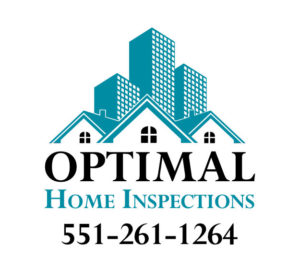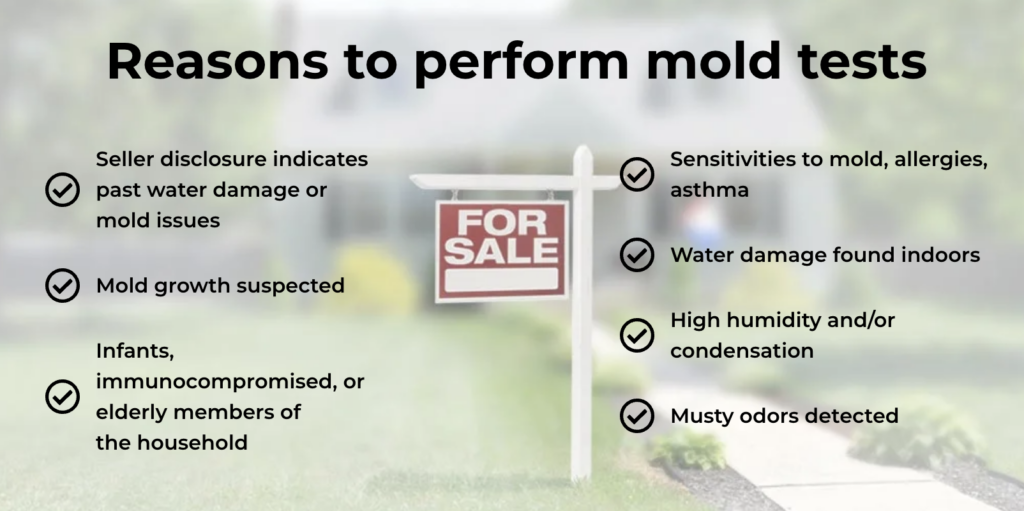
What is mold?
Molds are crucial in the natural environment, helping to break down dead organic matter. However, when they grow indoors, mold can become toxic and pose a potential threat. To avoid costly issues, allow me to inspect your home for mold and ensure a safe environment for you and your loved ones.
Mold damages what it grows on; the longer it grows, the more damage it can cause.
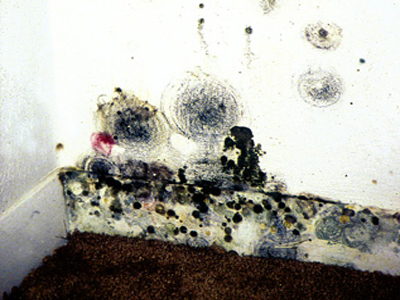
There are many types of mold, and they reproduce using microscopic, airborne spores. Mold can grow indoors when its spores float inside from outdoors and land on damp surfaces. Exposure to mold by inhaling or touching mold spores can cause allergic reactions and irritation to the lungs, eyes, skin, nose, and throat.
The mold that gets established can gradually destroy the things it grows on, including home furnishings and structural components. You can prevent damage to your home and furnishings, save money, and avoid health problems by controlling unwanted moisture intrusion and eliminating potential mold growth. Protect your investment and your family’s health, and let me inspect your home for mold and the warning signs of mold growth.
We Offer Two Types of Mold Inspection Services
We offer two types of mold inspections, which we perform on residential and commercial buildings. One type is the Complete Mold Inspection. The other type is the Limited Mold Inspection.
Complete Mold Inspection
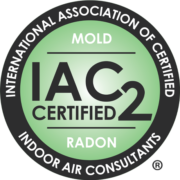
A Certified Mold Inspector performs the Complete Mold Inspection. It follows the Mold Inspection Standards of Practice of the International Association of Certified Indoor Air Consultants.
The Mold Inspector performs the following:
- a non-invasive, visual examination of the readily accessible, visible, and installed systems and components of the building;
- moisture, temperature, and humidity measurements;
- at least two air samples (one indoor and one outdoor); and
- possibly one surface sampling at an area of concern.
The Mold Inspector reports on the following:
- moisture intrusion;
- water damage;
- musty odors;
- apparent mold growth;
- conditions conducive to mold growth;
- the results of a laboratory analysis of all mold samplings taken at the building; and
- any system or components listed in the Standards of Practice that were not visually examined and why they were not inspected.
Unless the Mold Inspector and client agree to a limitation on the inspection, it will be performed on the primary building and attached parking structure.
A Complete Mold Inspection includes the following:
- a visual examination of the entire building, its systems, and components;
- moisture, temperature, and humidity measurements;
- taking mold samples
- lab and observations report.
Report
- You will receive an easy-to-read, visual summary of all sample locations from the lab. See a typical mold and air quality report.
- A full report of on-site observations.
What areas will we be looking at?
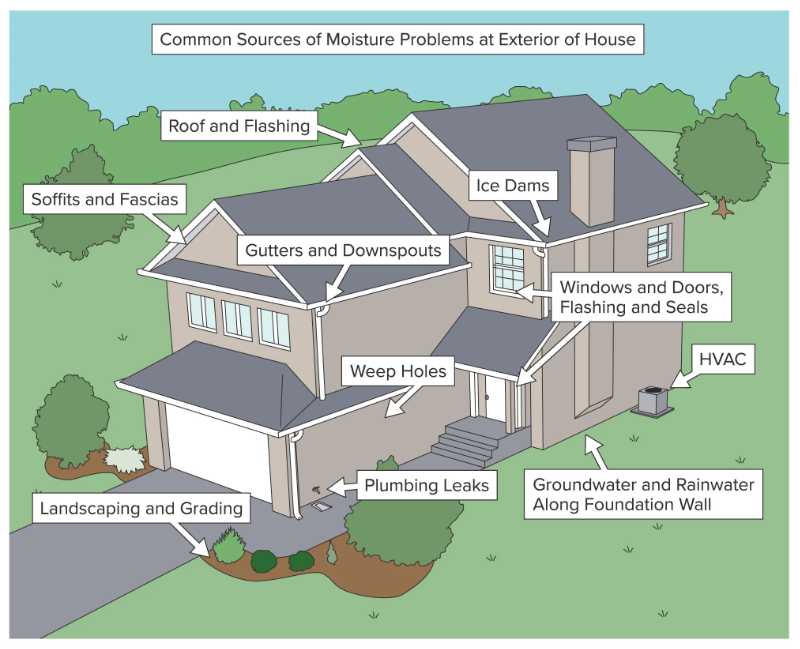
Exterior and Grounds
The inspector shall inspect from the ground level:
A. The cladding, flashing, and trim.
B. Exterior doors, windows, decks, stoops, steps, stairs, porches, railings, eaves, soffits, and fascias.
C. The exterior grading surrounding the building perimeter.
D. Items that penetrate the exterior siding or covering materials.
Basement, Foundation, Crawlspace, and Structure
The foundation, basement, or crawlspace, including ventilation for moisture intrusion.
Heating, Cooling, and Ventilation
A. The air handler, circulating fan, and air filter.
B. The condensate pump.
C. Readily visible ductwork.
D. A representative number of supply and return air registers.
E. The central humidifier.
F. The central air conditioning unit.
Plumbing
A. The readily visible main water line.
B. The readily visible water supply lines.
C. The readily visible drain, waste, and vent pipes.
D. Hot water source.
E. Fixtures such as toilets, faucets, showers, and tubs.
Attic, Ventilation & Insulation
A. Insulation.
B. Ventilation of attic spaces.
C. Framing and sheathing.
Interior
A. The walls, ceilings, floors, doors, and windows.
B. The ventilation in the kitchen, bathrooms, and laundry.
C. Whole-house ventilation fans
Moisture, Humidity, and Temperature
The inspector shall measure:
A. The moisture of any room or area of the building that has moisture intrusion, water damage, moldy odors, apparent mold growth, or conditions conducive to mold growth.
B. The humidity of any room or area of the building (at the inspector’s discretion).
C. The temperature of any room or area of the building (at the inspector’s discretion).
A complete mold and home inspection can be done simultaneously at a reduced rate.
Limited Mold Inspection
A Certified Mold Inspector performs a Limited Mold Inspection. The difference between a Complete Mold Inspection and a Limited Mold Inspection is that the latter limits the noninvasive, visual examination of the building.
The Limited Mold Inspection does not include a visual examination of the entire building but is limited to a specific area identified and defined by the Mold Inspector.
Before the inspection, the Mold Inspector and client shall agree to the limitations of the visual examination. As a result, potential sources of mold growth in other areas of the building may not be inspected.
The Mold Inspector will perform the following:
- A non-invasive, visual examination of the readily accessible, visible, and installed systems and components of only the specific room or area defined by the inspector;
- at least two air samples, one outdoor air sample as a control test and one indoor air sample, at the inspector or client’s discretion; and
- possibly one surface sampling at an area of concern;
- additional samples can be taken, air or surface, as the inspector recommends and at the client’s discretion. Additional samples start at $95.
Note: The standard lab processing time of samples is 48 hours. Faster processing is an additional charge based on the speed required.
The Mold Inspector will report:
- moisture intrusion;
- water damage;
- musty odors;
- apparent mold growth;
- conditions conducive to mold growth; and
- the results of a laboratory analysis of all mold samplings taken at the building.
The Limited Mold Inspection is a fast and affordable way to confirm the existence of mold and, if possible, determine the type of mold present in a specific, defined building area.
An example of a Limited Mold Inspection:
The inspector’s client requests a Limited Mold Inspection to be performed. The scope is specifically limited to the under-floor crawlspace of the building. Only the crawlspace will be inspected, including a non-invasive examination of the crawlspace. If apparent mold is visible, at least one mold sample will be taken, typically a tape sample.
A Limited Mold Inspection includes:
- visual examination limited to a specific, defined area of the building; and
- mold samples.
Qualifications
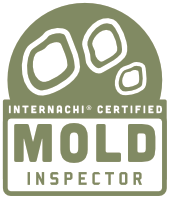
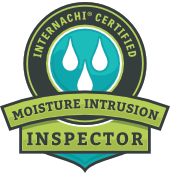

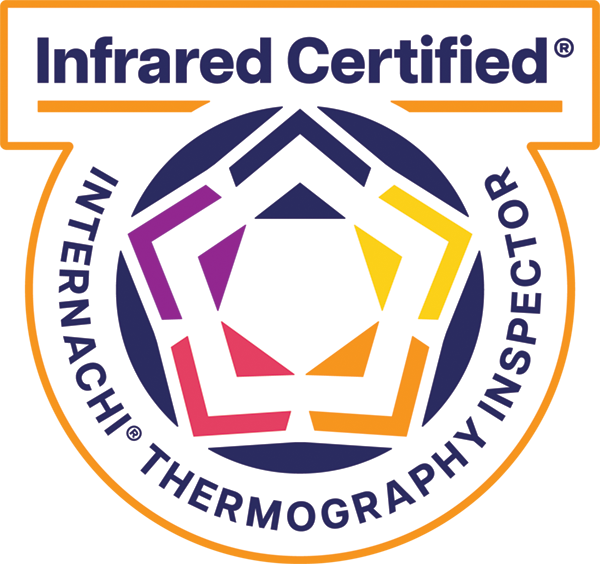
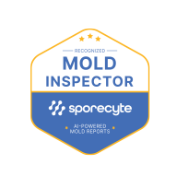
Please take a look at Best practices before your mold inspection.

